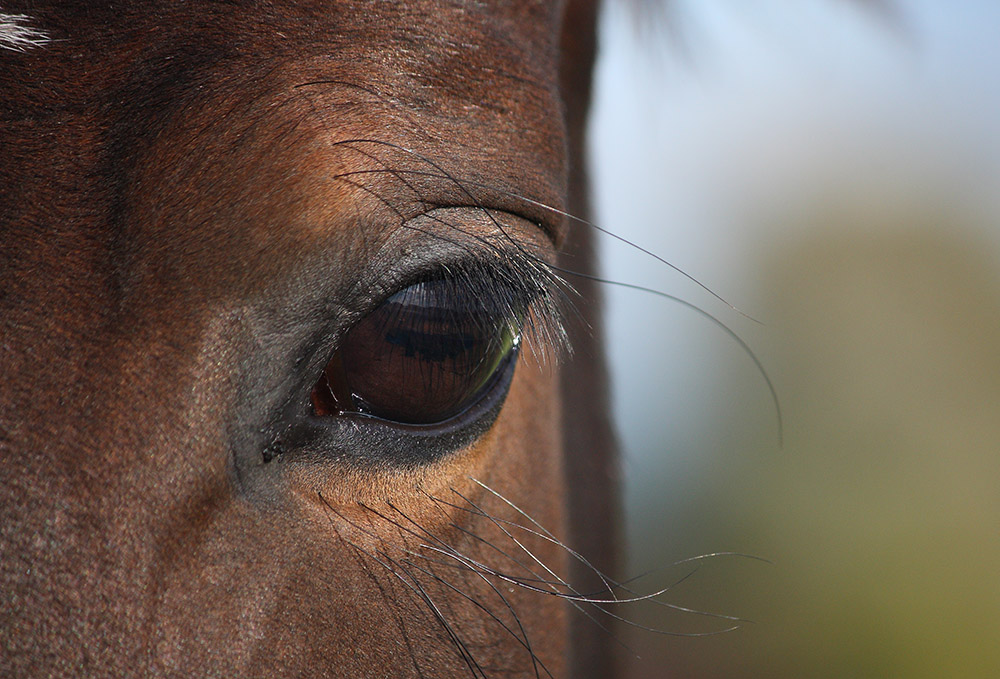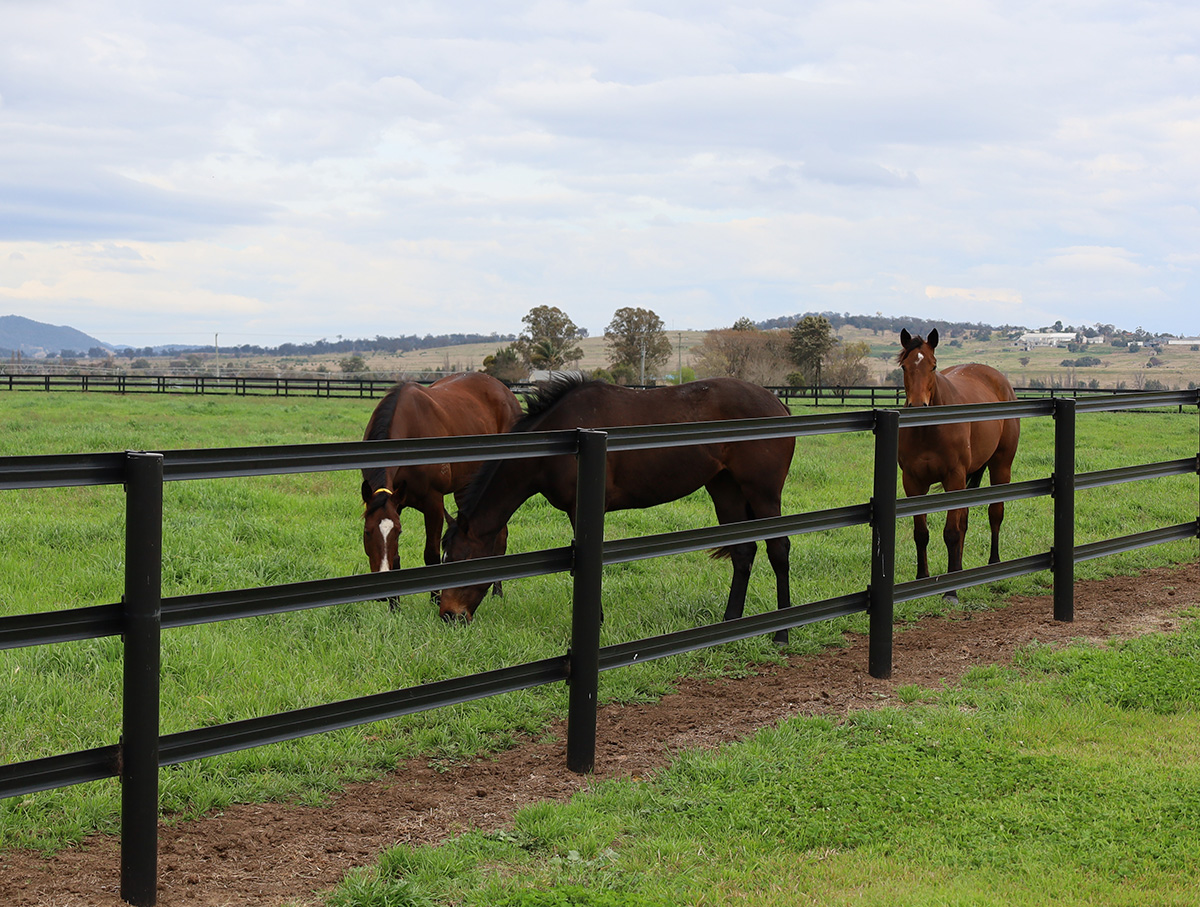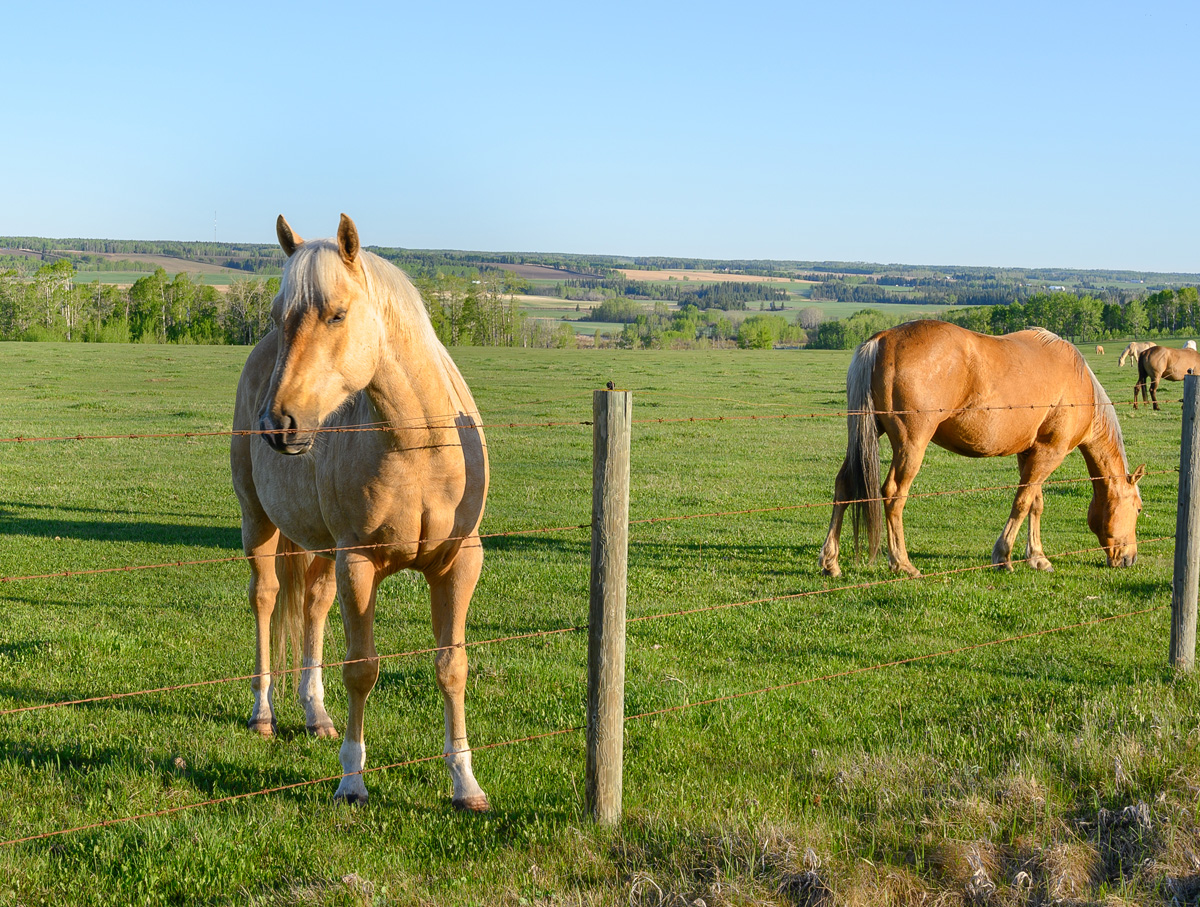Understanding equine eyesight and how it relates to safe fencing
When it comes to comparing the way humans and horses see the world, our vision couldn’t be more different! For this reason, we need to consider how horses see their surroundings to create the safest paddock fence, that they can easily see. This blog will cover the basics of equine vision and how this relates to horse fencing – helping you make an informed decision about the fencing of horse paddocks on your property.
How horses see:
Most horse owners will know that horses have almost 350 degrees of vision, due to the positioning of their eyes on the side of their head. Here are some interesting facts about equine eyesight you may not know…

- Horses have two small blind spots. One directly in front of them between their eyes for 3 to 4 feet and one directly behind their tail.
- Their ability to “focus” their vision is very poor compared to humans, as they have weak ciliary muscles (this focusing is done by changing the shape of the lens to sharply see objects near or far away through the ciliary muscles relaxing or contracting).
- Horses have a “visual streak” area in their eye, which is linear in shape and has a high concentration of cells transmitting information to the brain (up to 6100 cells/mm² compared to 150 cells/mm² in the peripheral area).
- Horse’s ability to see at night is around 50% better than a person’s. This is because horses have a layer of tissue behind the retina that humans don’t have, called the Tapetum Lucidum. This tissue reflects light back out along the light path through the retina and increases the horse’s vision in low light or night-time conditions.
- They have what’s called Dichromatic Vision, which means cells in the horse’s eyes naturally see the blue and green colours of the spectrum and the colour variations based upon them but cannot distinguish red. They aren’t colourblind but see fewer shades than us.
What it means for safer horse fencing practice:
So, now that we know a bit more about horse vision, how does this relate to the fences in their paddocks?
Lots of people may think brightly coloured fencing will help a horse see the boundary, but that’s not actually the most important element when it comes to creating highly visual fencing as they have excellent vision at night. The best thing we can do to ensure our horses notice and respect their boundary is to make it highly visual in width. Due to their superior vision in low light, they will easily be able to see both black and white fences.
As herbivores, horses have evolved as a prey animal. For this reason, horses are very sensitive to motion, as motion is the first thing detected in their peripheral vision, where they have weak focus. Horses therefore are flight animals and will usually run if something moves into their peripheral field of vision. So, while their eyesight is attuned to movement, it’s not so accurate when it comes to a static fence, especially when you’re talking about thin, plain, or barbed wire. Even humans have difficulty seeing wire fencing from as little as ten metres away, so imagine how hard it is for a galloping horse!
The highly visual nature of Stallion Rail makes it a safer option for flighty horses. It is available in 4-inch or 5-inch varieties – that’s a comparison of 10cm width on Stallion Rail, to 0.2cm width on regular wire! Even our Shockcoat, high tensile, coated wire is four times thicker and more obvious to horses than regular fencing wire or barbed wire.
Highly visual fencing prevents most injuries before they happen because it serves as a visual barrier that helps horses clearly distinguish the boundaries of their paddock. Fences that are easier to see will give your horse more opportunity to slow down or change direction before collision or entanglement.
Highly visual fencing also helps to minimise the risk of escape! Horses have a natural curiosity, and some can be prone to getting out of their paddock. When fencing doesn’t have a visually substantial appearance, horses can be more inclined to test their boundaries. Highly visible fencing helps to act as a deterrent, making it clear to the horse where the boundaries are and minimising the risk of your horse escaping and getting lost or injured.

Stallion Rail is highly visible as opposed to wire, making it more recognisable to horses.










